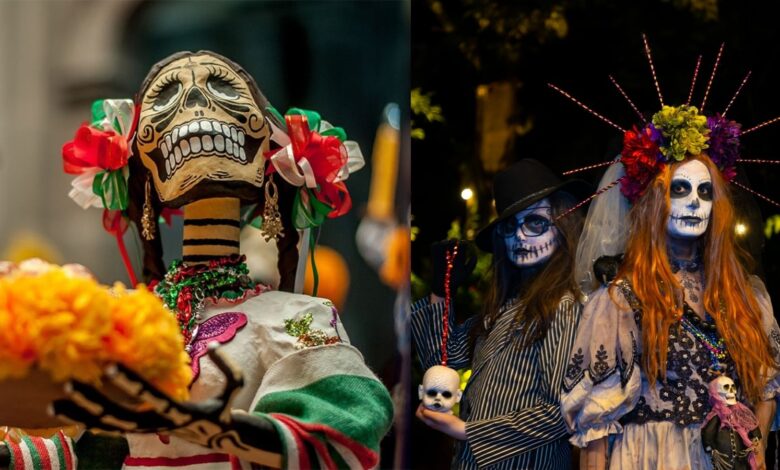Mexico’s Día de los Muertos to Japan’s Halloween Trains: This is how the Day of the Dead is celebrated the world over

If you’re a Halloween enthusiast, you may have, at one point or another, wished for the ‘traditions’ of trick-or-treating and pumpkin carving to have made it to our desi neighbourhoods. Realically, we are probably still a ways away from the day where we see little ghost-y kids ringing our bells, rightfully demanding candy. The good news is, that Halloween, across multiple cultures, denotes much more than just dressing up as your favourite Tim Burton (or Karan Johar, we don’t judge) character. So here’s taking a look at how the day of the dead is commemorated the world over. Halloween in many places the world over, is a rather culturally rooted affair moving way beyond trick-or-treating and jack-o-lanterns MexicoIn Mexico, Halloween is celebrated as Día de los Muertos, or the Day of the Dead. The occasion is observed as a time where one can reconnect with the souls of their deceased ancestors, not solemnly, but in mirth. Día de los Muertos involves elaborate feasts and lots of dancing coupled with the decoration of the gravesites of the departed souls with flowers, lamps and food offerings. In Mexico, Halloween is celebrated as Día de los Muertos JapanTrust Japan to take everything a whole level up. In a very, very exciting tradition that has come to be, trains and subways in Japan have emerged as the primary sight for Halloween celebrations. Just earlier this month, a live showcase of a zombie apocalypse was staged on a 2.5-hour long bullet train ride. For how niche yet dedicated Japan’s Halloween trains have emerged to be, every person who romanticises Halloween absolutely MUST make it Japan during this time of the year. Halloween trains have emerged as a contemporary tradition in Japan ItalyThe day of the dead is observed in Italy as Giorno dei Morti. More than celebratory, the day is one of reflective observance for the souls of the departed. Different regions in Italy follow different protocols. For instance, good behaviour of kids is rewarded with sweet treats, which are given to them on the behalf of their deceased ancestors. Many households also leave out a pail of water in the kitchen, for the revisiting dead to be able to quench their thirst, when they supposedly come to visit at night. Giorno dei Morti in Sicily, Italy PhilippinesSomewhat close to the whole trick-or-treating ecosystem in the States, the Filipino tradition of Pangangaluluwa entails children dressing up as little ghosties in white sheets as they knock on doors and sing prayers. They are often rewarded with sweet eats. Pangangaluluwa is definitely more celebratory than the Italian counterpart for Halloween, with feasting and story-telling being commonplace rituals for an evening huddle of family and friends. In Philippines, the dying tradition of Pangangaluluwa seems to be making a resurgence Costa RicaCosta Rica’s Halloween — Día Nacional de la Mascarada Costarricense — oversized, handmade paper mache masks, displayed across elaborate parades and gatherings form the crux of this very vibrant and colourful affair. While mythological figures have always been a favourite theme for the masked recreations, off late, pop culture biggies as well as political figures have also become popular when it comes to picking one of these carefully crafted masks for the year’s celebrations. Día Nacional de la Mascarada Costarricense commemorates the day of the dead in Costa Rica GuatemalaIn Guatemala, the day of the dead is commemorated as Festival de Barriletes Gigantes. Vibrant kites are flown over cemeteries as a mark of respect for the souls of deceased loved ones. Being celebrated across generations, this Guatemalan tradition is at least 3,000 years old. Festival de Barriletes Gigantes marks the day of the dead celebrations in Guatemala IrelandIn Ireland (as well as Scotland), the day of the dead is commemorated as the festival of Samhain which also coincides with the conclusion of the harvest season and the commencement of winter. Believed to be a time when the worlds of the living and dead amicably coincide, the origins of this tradition reportedly date back to the 9th century. Samhain marks the spooky season festivities in Ireland What are your Halloween plans this year?







